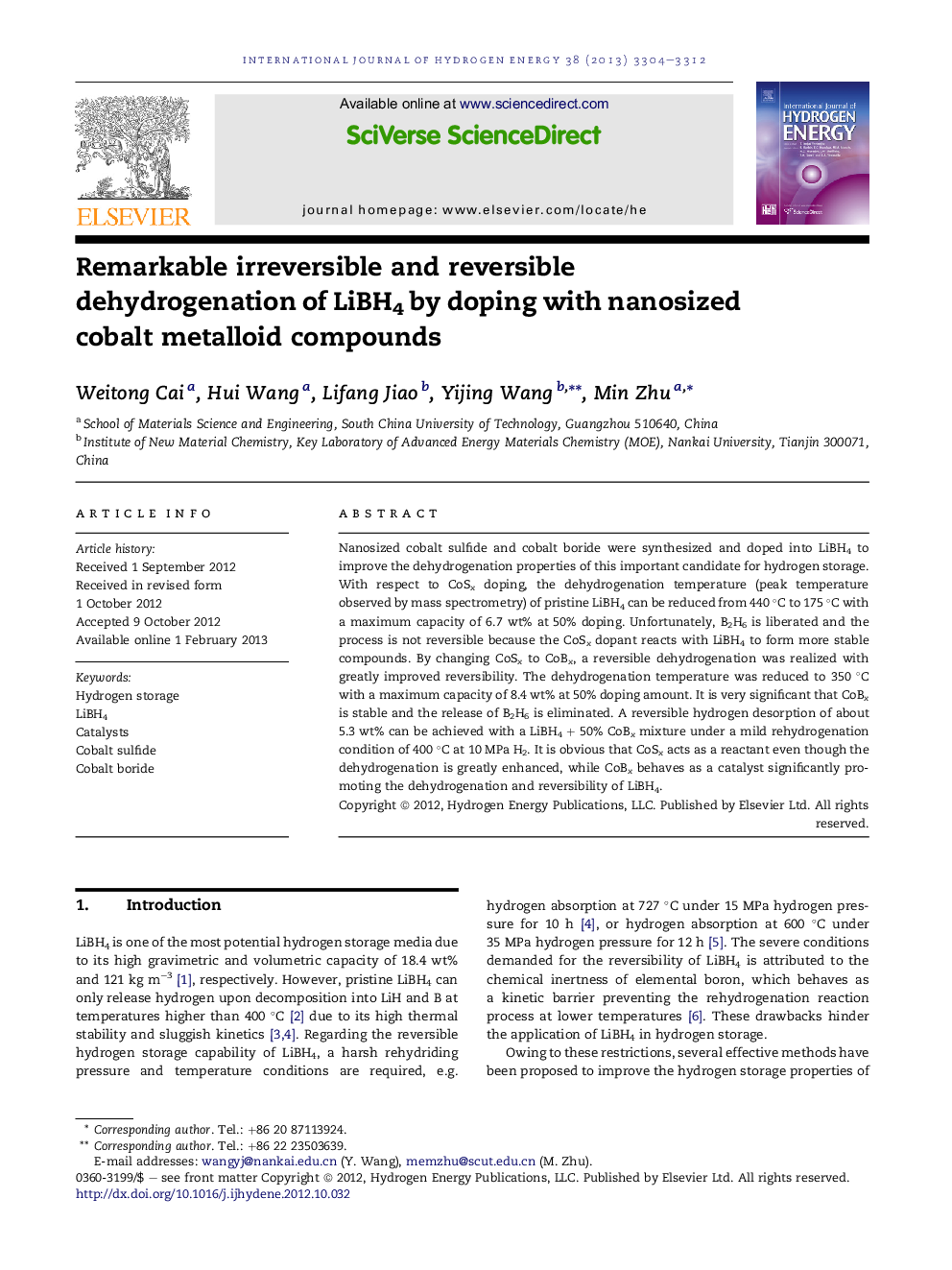| Article ID | Journal | Published Year | Pages | File Type |
|---|---|---|---|---|
| 1275747 | International Journal of Hydrogen Energy | 2013 | 9 Pages |
Nanosized cobalt sulfide and cobalt boride were synthesized and doped into LiBH4 to improve the dehydrogenation properties of this important candidate for hydrogen storage. With respect to CoSx doping, the dehydrogenation temperature (peak temperature observed by mass spectrometry) of pristine LiBH4 can be reduced from 440 °C to 175 °C with a maximum capacity of 6.7 wt% at 50% doping. Unfortunately, B2H6 is liberated and the process is not reversible because the CoSx dopant reacts with LiBH4 to form more stable compounds. By changing CoSx to CoBx, a reversible dehydrogenation was realized with greatly improved reversibility. The dehydrogenation temperature was reduced to 350 °C with a maximum capacity of 8.4 wt% at 50% doping amount. It is very significant that CoBx is stable and the release of B2H6 is eliminated. A reversible hydrogen desorption of about 5.3 wt% can be achieved with a LiBH4 + 50% CoBx mixture under a mild rehydrogenation condition of 400 °C at 10 MPa H2. It is obvious that CoSx acts as a reactant even though the dehydrogenation is greatly enhanced, while CoBx behaves as a catalyst significantly promoting the dehydrogenation and reversibility of LiBH4.
Graphical abstractFigure optionsDownload full-size imageDownload as PowerPoint slideHighlights► CoSx and CoBx improved the hydrogen storage properties of LiBH4. ► 7 wt% H2 is released at 175 °C within 20 min with B2H6 species for LiBH4 + CoSx. ► 8 wt% H2 is achieved at 350 °C in 20 min with No B2H6 emission for LiBH4 + CoBx. ► 5.3 wt% H2 is reversible for LiBH4 + CoBx, the LiBH4 + CoSx is irreversible. ► CoSx plays a role of reactant to destabilize LiBH4, CoBx behaves as catalyst.
